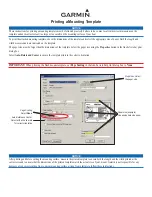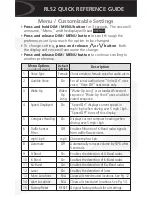
AMS Diffusion
- Rue des Galeries - ZA du Chevalement - 59286 Roost Warendin - FRANCE - Tél. +33 (0)3.27.94.44.44 - Fax. +33 (0)3 27 94 44 45
Email : [email protected] - www.ams-diffusion.com RCS DOUAI A 451 360 382 - CODE APE 4531Z - SIRET 451 360 382 00035 - TVA FR 55 451 360 382
10
4. TECHNICAL ADVICE
EQUIPMENT TESTING
A movement test must be conducted every day to ensure the proper operation of the system and to familiarise
the operator with the detection zone. More frequent inspections must be conducted when:
- The vehicle is operating in a particularly dirty or difficult environment.
- The operator has reason to suspect the system has been damaged.
This test must be conducted by two people, one of whom remains in the cab (the operator), with the other
walking in the sensor’s field of detection (the assistant).
1. Clean the front of the sensor from any accumulated dirt, mud, snow, ice or debris.
2. Visually inspect the wiring and the attached cables and ensure that they are properly attached and not
damaged. Inspect the radar sensor and the control unit and ensure they are securely attached to the vehicle.
3. Apply the parking brakes, start the vehicle, press and hold the vehicle brake and put the vehicle in
reverse gear.
4. The area to the rear of the vehicle must be free of obstacles over a distance greater than the sensor’s range.
If the monitor displays a superimposed image or the buzzer is triggered, then there are objects to the rear of
the vehicle that are interfering with the test. Move the vehicle to an open area and continue.
5. The assistant should stand just behind the rear corner of the vehicle, visible by the operator in the rear view
mirrors. They should then walk towards the vehicle’s centre line, parallel to the rear, while the operator notes
when the monitor displays a superimposed image and an audible warning sounds, indicating that the sensor
has detected the object.
6. The assistant should continue to walk in the area behind the vehicle while the operator notes the area in
which the assistant is detected.
7. Then, starting from the centre of the rear of the vehicle, walk away from the vehicle. When the buzzer stops
sounding or the superimposed image disappears, the detection limit has been reached.
8. The assistant should cover the entire rear of the vehicle while the operator notes the detection limits of the
entire coverage zone.
9. After the test, the operator and the assistant must record the details of the detection zone.











































